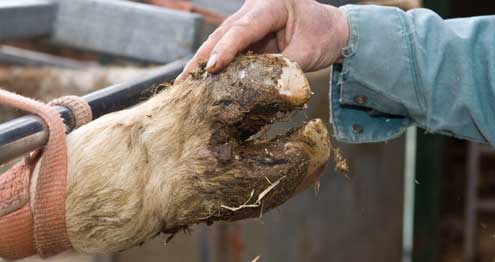Amputation aids dairy lameness recovery

Amputation of an individual claw due to a non-healing fault such as a ruptured sole ulcer can see cattle return to a productive life, but success is determined largely by the immediate aftercare on farm.
Sara Pedersen of Nantwich Veterinary Group told delegates at the recent Cattle Lameness Conference, Worcester, that a study of amputations had shown many cows return to a productive life.
Of all amputations, almost three-quarters were a hind claw, she explained. “Although front claws take the bulk of the cow’s bodyweight, rear claws are under greatest pressure when providing propulsion.”
Amputation can only be considered where one good claw remains on the affected foot. This is imperative, as it will become the sole load bearer after the operation.
The cost of amputation – ranging from £120-140, including vet labour, medicines and bandages – had to be put into perspective, she said. “As a severely lame cow is unable to travel, it cannot be sent away as a barren or cull into the food chain, and leaves the producer with a bill for disposal.”
The success of amputations was encouraging. Miss Pedersen’s study of records from two large Cheshire veterinary practices, covering about 200 amputations, showed 55% of cows having a rear claw amputated and 85% having a front claw removed were still active one year later.
The average survival post surgery was 22 and 36 months, respectively, although individual cases recorded survival of up to six years.
“Survival is dependant on a number of factors, not least the post-operative care on farm in the first 50 days. Keeping the wound clean and dry by regularly replacing dressings is critical.”
“Having dissected amputated claws and removed the pedal bone for inspection, the deterioration of the bone material and adjacent navicular joint is quite often alarming. In these cases, a cow would never be fully fit.”
Miss Pedersen is also reviewing the position of an amputation and the impact on recovery. Although many vets remove a claw behind the lower pedal bone, removal higher up may maintain better blood flow to recovering tissue.
